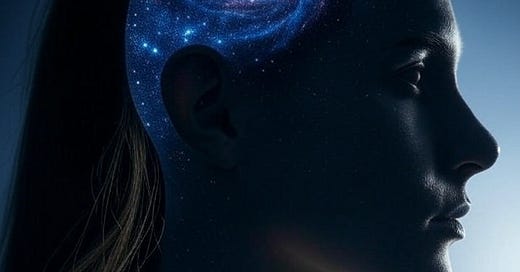The Mind's Eye and Conscious Experience
Exploring the Overlap Between Visual Imagery and Perception in Conscious Thought
In recent years, our knowledge of mental imagery has grown by leaps and bounds. Not so long ago, “mental imagery” was widely thought to be unscientific, relatively unimportant, or at least beyond the reach of current scientific methods. But in little more than a decade, we have gained a great amount of solid and reliable information about mental imagery.
In general, there is a remarkable resemblance between the domain of mental imagery and ordinary visual perception — between the Mind’s Eye and the Body’s Eye. The visual field is a horizontal oval, as anyone can verify by simply fixating at one point in space and moving their hands inward from the sides toward that point. Coming from the right and left sides, the hands become visible at approximately 65 degrees from the fixation point — long before they can be seen when moving inward vertically, from above and below. The same kind of experiment can be done mentally with the eyes closed, yielding similar results.
Likewise, in the Mind’s Eye we lose resolution with distance. We can see an elephant from thirty paces, but to see a fly crawling along the elephant’s ear, we must “zoom in” mentally to get a better mental look. As we do so, we can no longer see the elephant as a whole, but only part of its ear. There are many clever experiments that suggest other similarities between vision and visual imagery.
The best current theory of mental imagery suggests that the Mind’s Eye is a domain of representation much like a working memory, with specifiable format, organization, and content. Notice also that we can exercise some voluntary control over mental images — we can learn to rotate them, zoom in and out of a scene, change colors, and so forth. Mental imagery cannot be the same as conscious experience, but it is certainly a major mode of consciousness.






This is a great summary of research that was long overdue.
How does this comport with what is known about the vast, multidimensional range of individual experiences of mental imagery, including, at one extreme, aphantasia?